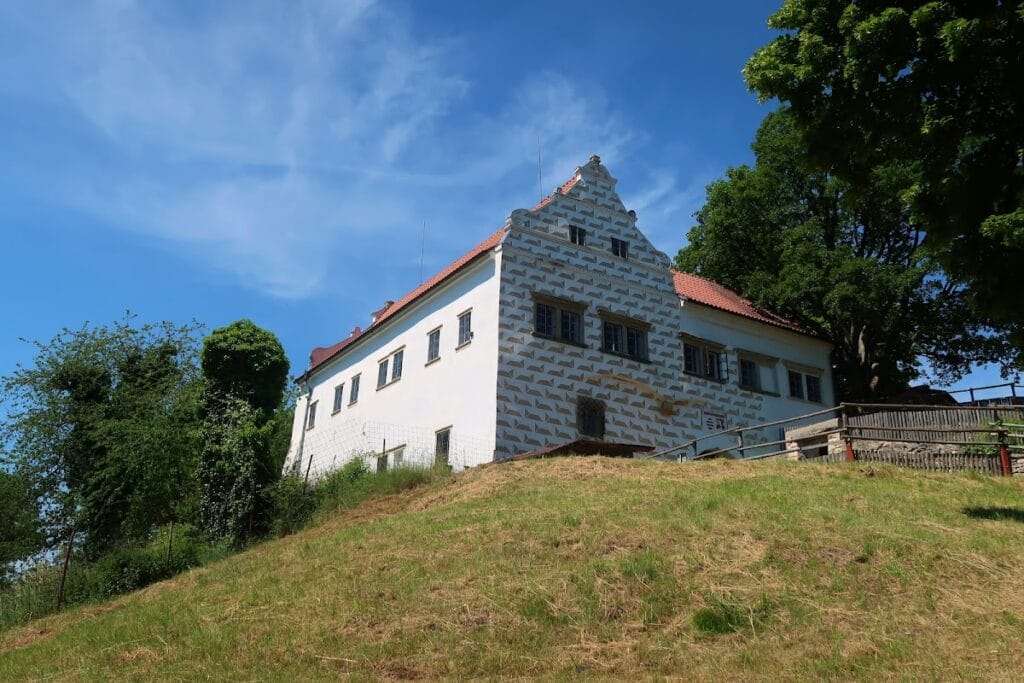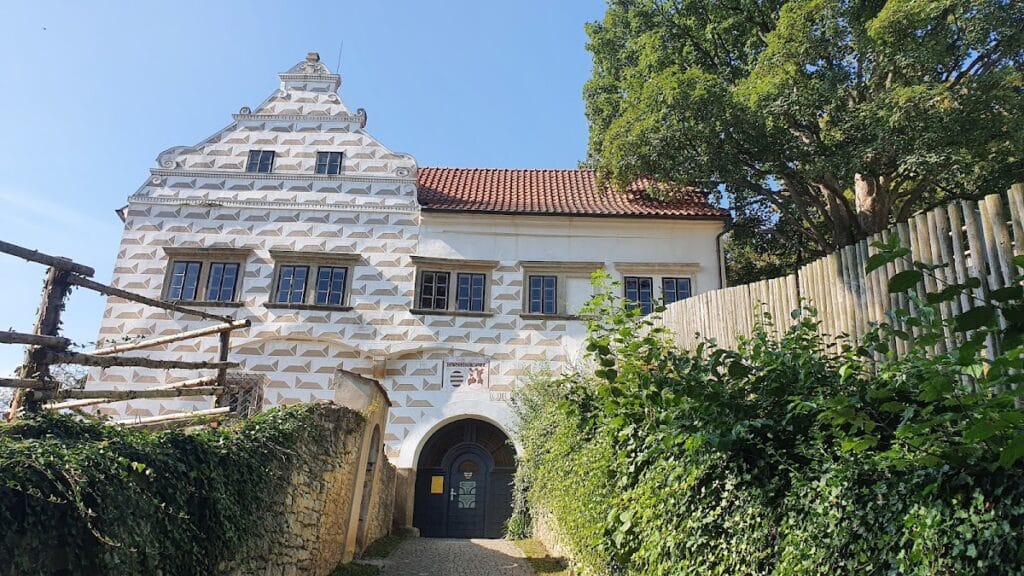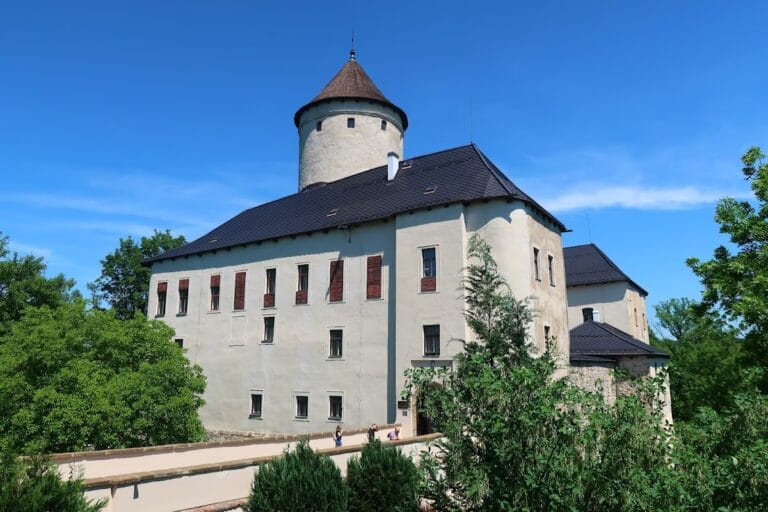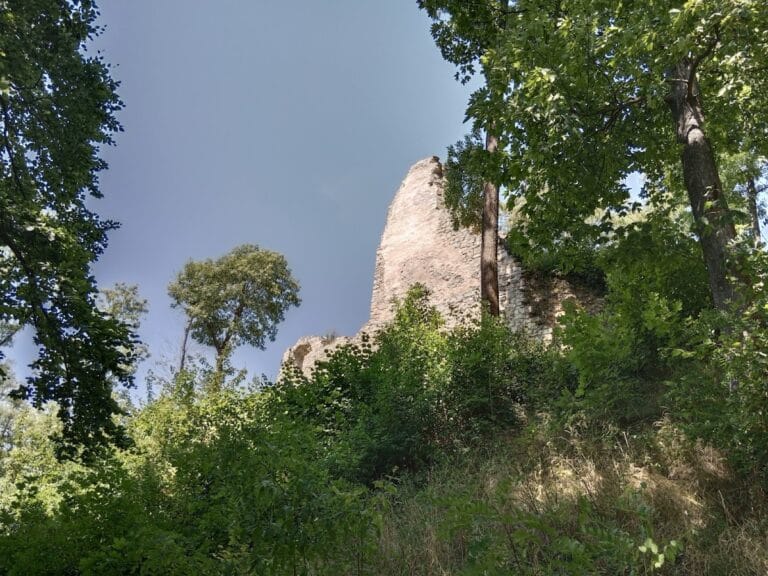Košumberk Castle: A Medieval and Renaissance Fortress in the Czech Republic
Visitor Information
Google Rating: 4.5
Popularity: Medium
Google Maps: View on Google Maps
Official Website: www.hradkosumberk.cz
Country: Czechia
Civilization: Medieval European
Remains: Military
History
Košumberk Castle is located near the village of Luže in the Czech Republic. It was founded by the medieval Bohemian nobility in the latter half of the 13th century as a fortified stronghold overseeing the Novohradka valley. Dendrochronological analysis dates some of the oldest preserved timber to shortly after 1255, confirming its origins during the high Middle Ages. The first written mention of the castle appears in early 14th-century documents, indicating its early role in regional defense and administration.
From its beginnings, Košumberk served as a Gothic fortress designed to guard important routes and assert feudal control over the surrounding landscape. In 1372, the castle became the seat of the Slavata family of Chlum and Košumberk, who would maintain ownership for almost three hundred years. Under their care, the fortress underwent significant expansion and rebuilding aligned with the late Gothic style, reflecting both military and residential ambitions.
In 1540, Diviš Slavata established a Czech Brethren school at Košumberk, enhancing the castle’s role beyond military use into an educational and cultural center. This institution attracted prominent students, including Albrecht von Wallenstein, a leading military figure during the Thirty Years’ War, and Vilém Slavata, an important nobleman and statesman.
A fire in 1573 caused considerable damage to the castle, prompting Diviš Slavata to initiate a series of Renaissance-style repairs and enhancements. By around 1600, his grandson Diviš Lacembok completed the transformation, including the construction of a substantial two-winged Renaissance palace, distinguished by an arcaded gallery and a clock tower. This reconstruction highlighted a shift from purely defensive structures to more comfortable and symbolically significant architecture.
The following century brought decline as the Thirty Years’ War (1618–1648) affected the region. Košumberk suffered damage from military activity and economic difficulties during this period. Eventually, the castle came under the ownership of the Jesuit order in the late 17th century. While the Jesuits established nearby religious buildings, such as a church and living quarters, they primarily used the castle itself for storage rather than residence.
After the suppression of the Jesuit order in 1773, Košumberk was abandoned and gradually fell into ruin. In the 19th century, the property passed through noble hands, including Leopold de Laing and Prince Karl Max von Thurn und Taxis, neither of whom lived at or maintained the castle. In the early 20th century, local communities organized to preserve the site, creating a cooperative that conserved the ruins and opened a museum within the surviving burgrave’s residence. Since 1953, the castle has been state property, managed by the nearby town of Luže.
Throughout its history, Košumberk has also served as a venue for public events. In the late 19th century, it was the site of commemorations celebrating the legacy of Jan Hus, the Bohemian religious reformer, and more recently hosted both folk and rock music festivals.
Remains
Košumberk Castle is perched atop a hill rising 374 meters above sea level, overlooking the Novohradka valley. Its strategic position on steep terrain offered natural protection, particularly on the south-eastern side, where the slopes are especially sharp. The castle’s layout reflects a medieval fortress that evolved over centuries, combining defensive walls with later residential structures.
The original Gothic fortress featured a robust stone curtain wall reaching up to four meters in thickness. An oblong entrance tower guarded the south-east approach, the most accessible point for visitors and potential attackers. This tower was linked to the main palace area by a wooden bridge designed to be removed or destroyed in times of danger. Traces of the drawbridge mechanism are still visible elevated above the ground on the entrance side, accessible from the courtyard likely by a removable wooden ramp, indicating carefully planned defensive features.
Following Renaissance renovations around 1600, a large two-winged palace was added northeast of the medieval core. This building is notable for an arcaded loggia—a covered gallery with a series of arches overlooking the courtyard—and a clock tower positioned on the southern side of the courtyard. The palace’s façade was adorned with intricate sgraffito decoration, a technique involving layers of plaster scratched to reveal contrasting colors beneath, considered one of the most beautiful examples in the Chrudim region.
Today, visitors can see the preserved burgrave’s residence (the official’s living quarter) which now houses a museum dedicated to the castle’s history. The museum includes a detailed model of Košumberk as it appeared in the Renaissance period. Parts of the palace walls still stand, alongside the restored gatehouse, which has been converted into additional exhibition space. Remnants of the castle’s fortifications, including defensive walls and structural foundations, remain visible but fragmentary.
The castle grounds are accessible by footpaths and roads, and a recently installed wooden barrier-free footbridge on the southern side facilitates movement within the site. Nearby, two small chapels—the Chapel of St. John Nepomuk and the Paletínská Chapel—mark the religious presence around Košumberk. A large sycamore maple tree growing beneath the castle adds to the character of the site, often noted in local accounts.
Together, these features provide a layered archaeological record of Košumberk’s centuries of military, residential, and religious use. The ruins preserve a vivid testimony to the castle’s development from a Gothic fortress to a Renaissance residence and its later decline in the modern era.







